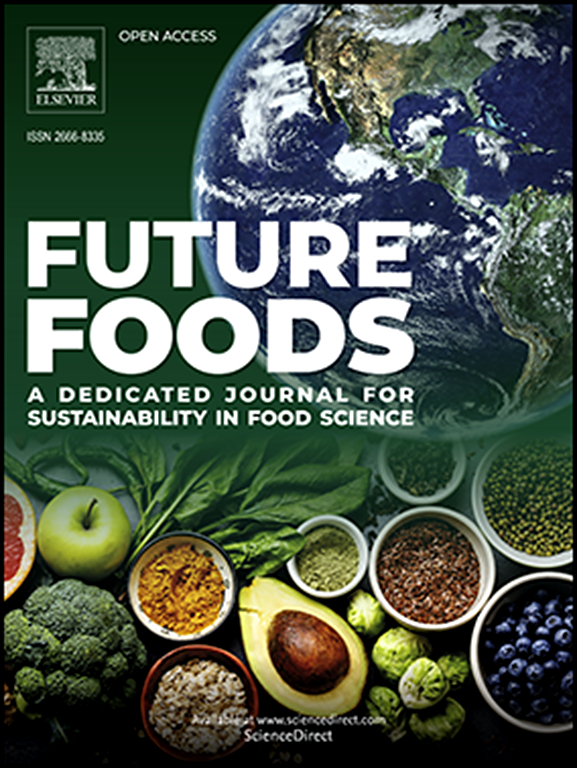Effect of cornstarch partial substitution by millet flour and agro-industrial by-products on the development of gluten-free doughs
IF 7.2
Q1 FOOD SCIENCE & TECHNOLOGY
引用次数: 0
Abstract
Agro-industrial by-products such as rice bran (RB) and soybean extruded-expelled meal (SEE), along with millet, contain nutrients that should be integrated to food-chain. The aim of this study was to characterise these raw-materials and evaluate their effect in the development of gluten-free doughs. A factorial design was used to evaluate the substitution of cornstarch up to 60 % by RB, SEE and millet flour. RB and SEE contain 31.5 and 21 % dietary fibre (DF); 17.2 and 8.8 % lipids; 13.1 and 45.9 % protein; respectively. Millet flour presented 9.2 % protein, 6.3 % lipids and 5.3 % DF. Surfaces areas of particles from RB and SEE were higher (63 and 94 m2/kg, respectively) than those from millet flour (25m2/kg). All these properties modified dough hydration, affecting the optimal fermentation time of dough as well as pasting properties. The minimum cornstarch substitution presented the highest peak viscosity (1750cP) and longer optimal fermentation time (53 min). While system 4, with the maximum cornstarch substitution by 30 % of RB, 15 % of SEE and 15 % millet, tended to the lowest setback value (134cP). Significant positive correlations among dough pasting properties and fermentation parameters were recorded. Partial substitution of cornstarch by RB, SEE and millet enhanced doughs development.

求助全文
约1分钟内获得全文
求助全文
来源期刊

Future Foods
Agricultural and Biological Sciences-Food Science
CiteScore
8.60
自引率
0.00%
发文量
97
审稿时长
15 weeks
期刊介绍:
Future Foods is a specialized journal that is dedicated to tackling the challenges posed by climate change and the need for sustainability in the realm of food production. The journal recognizes the imperative to transform current food manufacturing and consumption practices to meet the dietary needs of a burgeoning global population while simultaneously curbing environmental degradation.
The mission of Future Foods is to disseminate research that aligns with the goal of fostering the development of innovative technologies and alternative food sources to establish more sustainable food systems. The journal is committed to publishing high-quality, peer-reviewed articles that contribute to the advancement of sustainable food practices.
Abstracting and indexing:
Scopus
Directory of Open Access Journals (DOAJ)
Emerging Sources Citation Index (ESCI)
SCImago Journal Rank (SJR)
SNIP
 求助内容:
求助内容: 应助结果提醒方式:
应助结果提醒方式:


